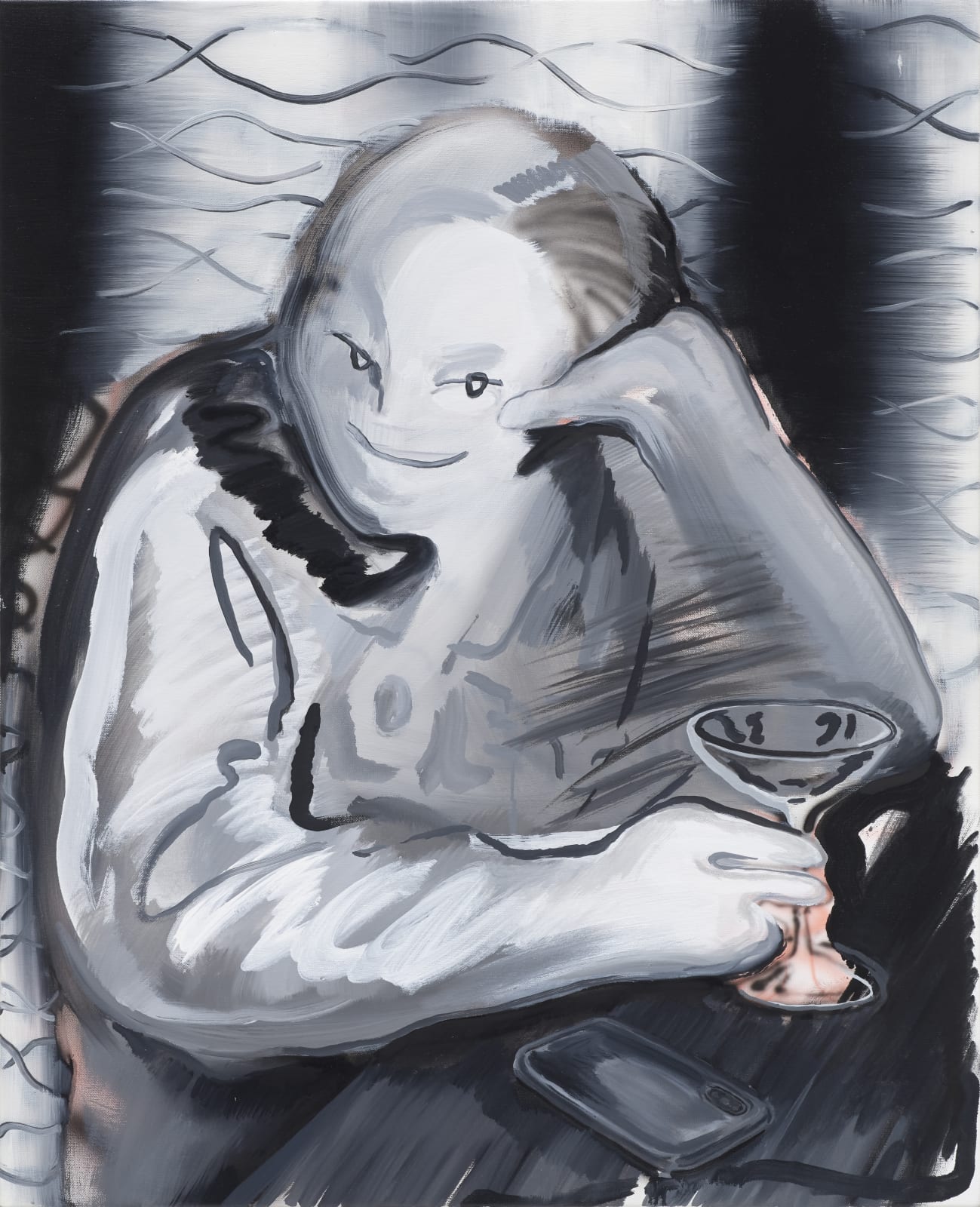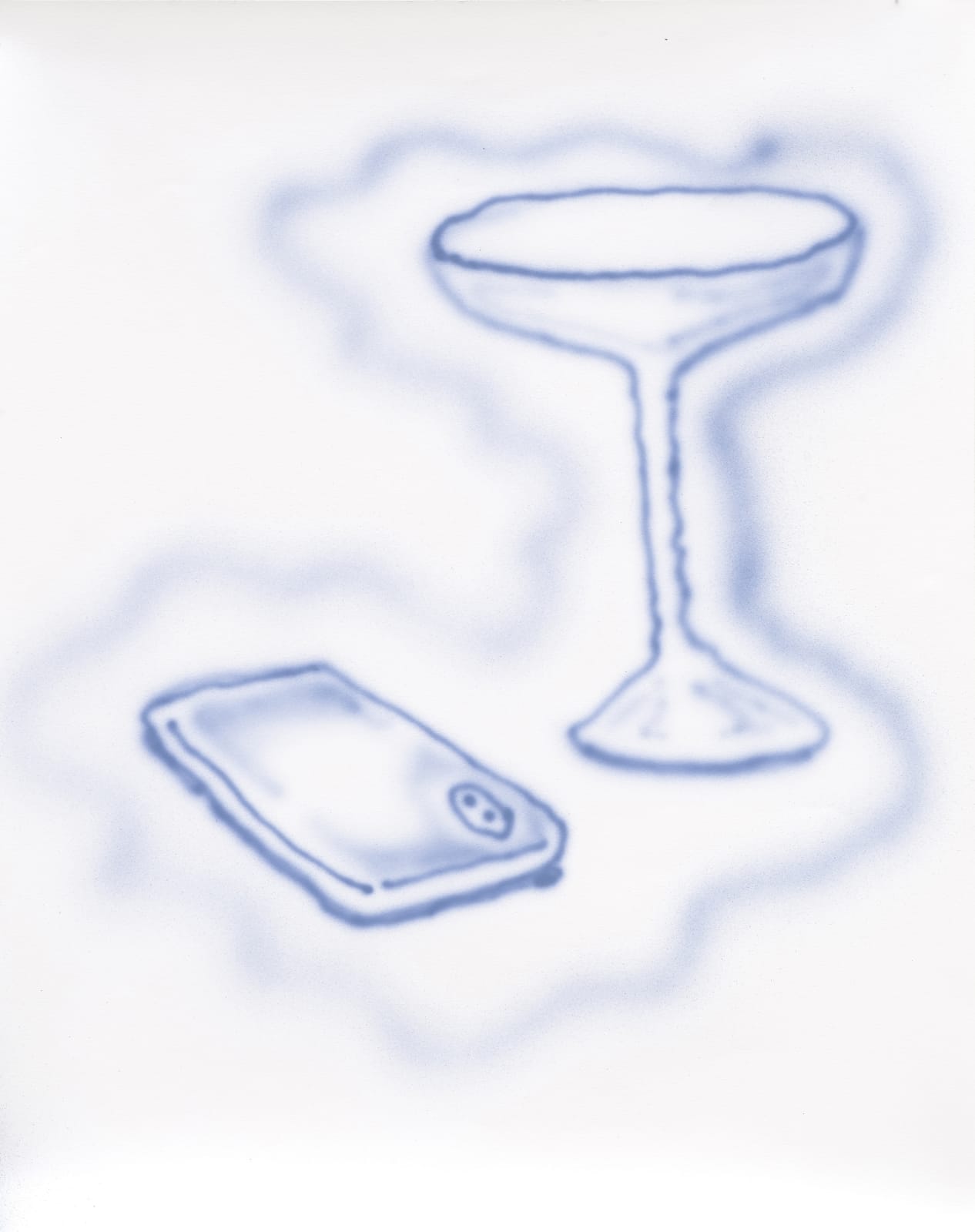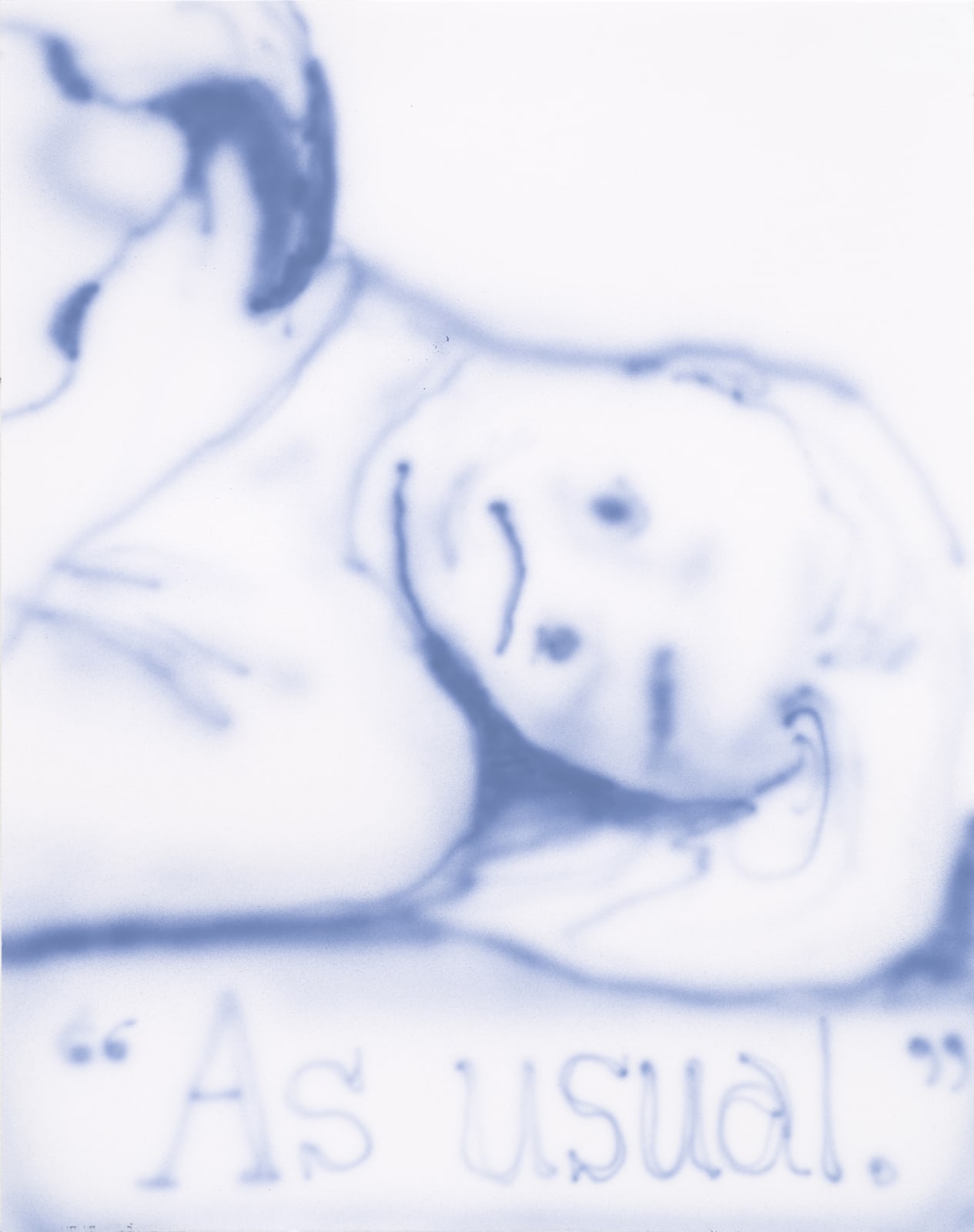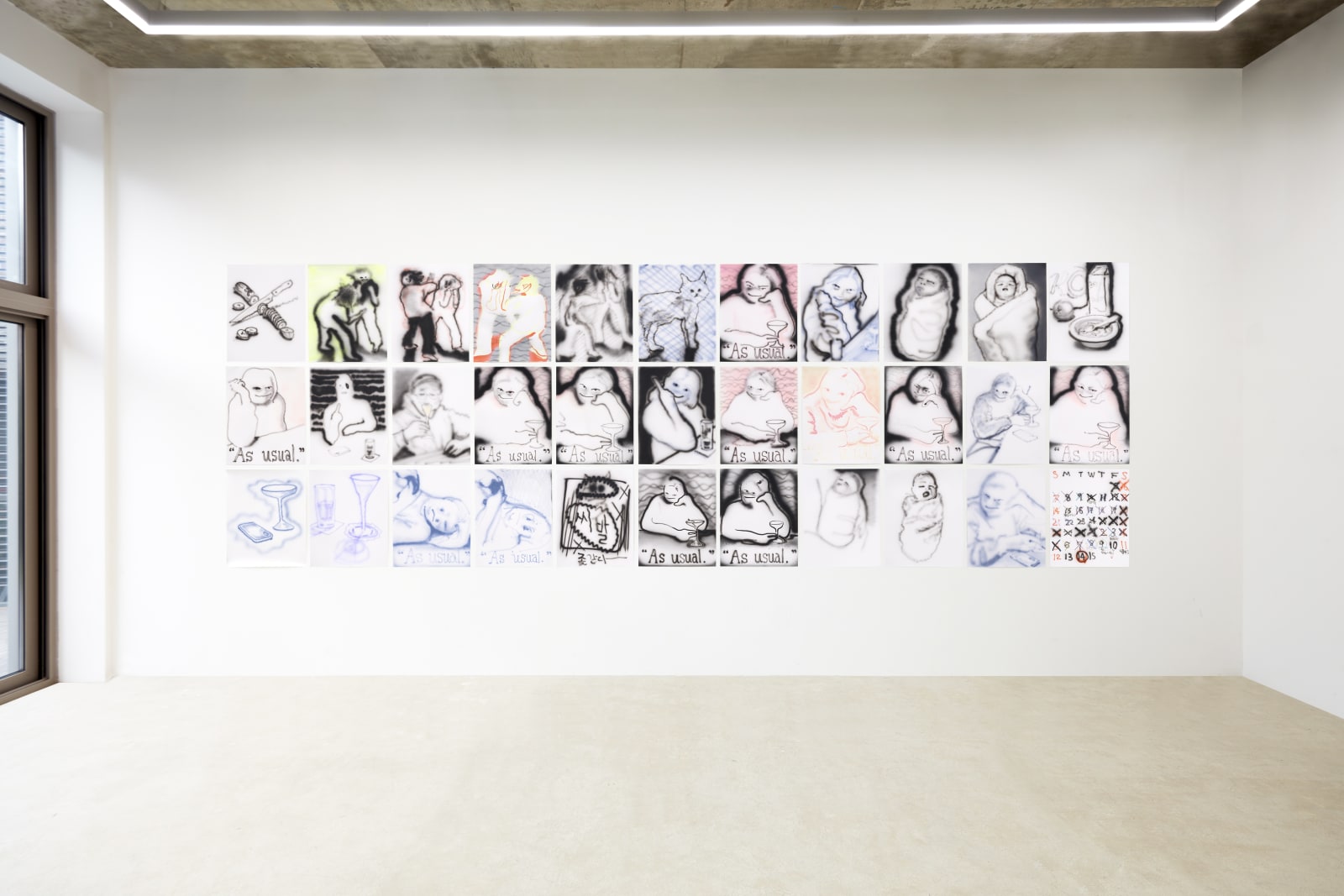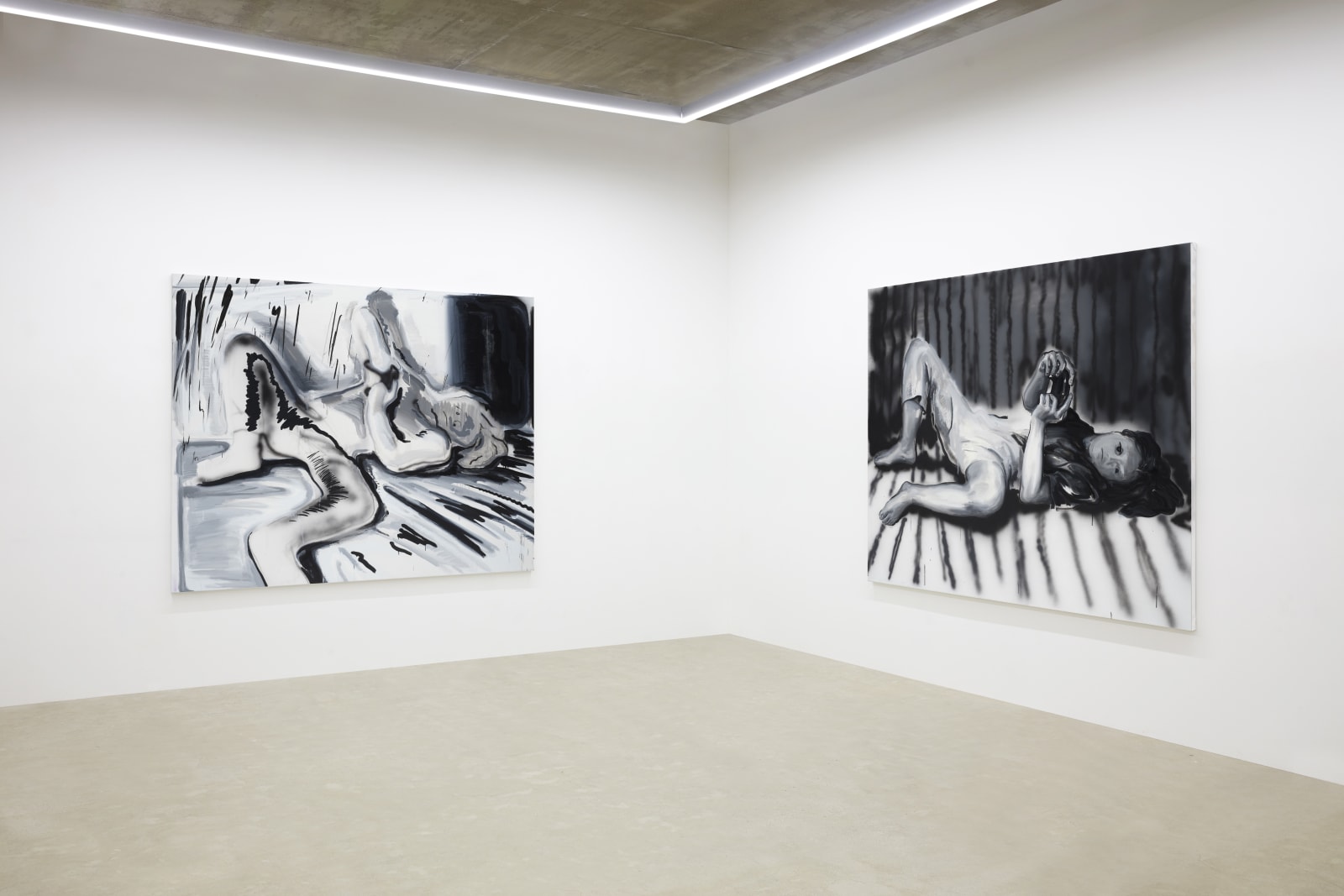As usual : 늘 마시던 걸로: 이은새 Eunsae Lee
그림은 근본적으로 이미지에서 출발하지만 단지 이미지인 것은 아니다. 화가의 머릿속에서 아직 고정되지 않은 액체 상태의 이미지가 눈으로 볼 수 있는 현실이 되어야 한다. 어쨌든 이미지를 종이든 캔버스든 견고한 지지체에 옮겨 놓아야만 작품이 된다. 화가는 자신에게서 끌어낸 이미지를 물질로 만들어 사람들이 볼 수 있도록 해야 한다.
‘늘 마시던 걸로’. 근사한 바에서 슈트를 입은 멋진 남자 주인공이 문을 열고 들어오며 말할 법한 이 대사. 글쎄, 현실에서는 들어본 적이 없(을 것이)다. 당신이 정말로 이 대사를 근사하게 말해보고 싶다면 먼저 자신이 평소에 무엇을 자주 마셨는지 생각해봐야 한다. 그것도 바텐더가 한 번에 알아들을 수 있도록 매우 자주 말이다. 이은새는 평소에 드로잉으로 ‘늘 그리던 것’을 회화로 옮기고 싶은데 자신이 대체 무엇을 잘 그렸는지 모르겠다고 한다. 마치 우리가 ‘늘 마시던 걸로’라는 말을 하고 싶지만, 도대체 뭘 자주 마셨는지 모르는 것처럼.
이은새는 기록 사진이나 기억에 남은 장면을 상상으로 나온 이미지와 더해 ‘순수 이미지’를 만들어 낸다. 여기서 작가는 만족을 얻기 위해 불필요한 요소를 자유롭게 제거하기도 한다. 그런 순수 이미지가 유용한 것을 지향하고 자신의 가치를 전적으로 드러낼 때 ‘그림’이 된다. 문제는 바로 여기에서 발생한다. 작가의 구상력을 통해 만들어진 순수 이미지는 그림이 되면 어느 정도 실패 할 수 밖에 없다. 왜냐면 아직 머릿속에 계획으로만 남아 있는 순수 이미지는 고정된 것이 아니라 작가의 필요에 따라 자유롭게 움직이고 형체를 변형할 수 있기 때문이다.
순수 이미지를 가장 빠르고 효과적으로 고정시킬 수 있는 것은 드로잉 작업이다. 드로잉은 무성의해 보이고 어눌해 보이고 과장되고 왜곡되고 모든 것이 복잡 미묘한 상태로 존재한다. 그리고 즉흥적인 행위와 치밀한 계획에 따른 행위가 모두 가능하다. 드로잉 작업은 미해결의 상태로 남아 불완전하지만 그만큼 잠재력을 갖는다. 반면 회화 작업은 확신에 차 있으며 신중하고 조심스러우면서도 결단력을 보인다.
이은새는 회화 작업을 위해 많은 드로잉을 제작한다. 그리고 디지털 작업을 통해 드로잉의 선과 색을 보정하는 과정을 거친 후에 드로잉을 캔버스에 옮겨 낸다. 그는 드로잉 작업과 다르게 회화 작업을 할 때 계획한 대로 완성해야 한다는 부담감을 느낀다고 한다. 그래서 이번 전시에서는 드로잉과 회화의 간극을 좁히는 데 주력했다. 이중의 리듬, 즉 명쾌한 단순화와 진중한 진보를 한 캔버스에 모두 담아내겠다는 것이다.
이은새는 드로잉 작업을 통해 한 장면을 반복적으로 그린다. 어떤 화가도 단 한 번에 대상의 본질을 세세하게 파악하고 기록할 수 없다. 그가 할 수 있는 것은 하나의 결과에 대한 재조정과 타협뿐이다. 같은 장면에 대한 반복적인 드로잉 제작은 작가가 머릿속에서 만들어낸 순수 이미지에 ‘더’ 접근하거나 ‘덜’ 접근하는 과정이다. 그렇다면 많은 드로잉 중 캔버스로 옮겨지는 것은 어떤 이미지인가. 작가는 반복되는 이미지 속에서도 어딘가 이상하게 튀는 등 뭔가 차이가 느껴지는 장면을 골랐다고 한다. 실제 사물과 이미지 혹은 상상과 현실화된 이미지의 관계에 있어 우리가 반응하는 것은 복사하듯이 꼭 닮게 그려낸 결과물만은 아니다.
이번 전시에서 이은새는 모든 작품을 관통하는 통일된 주제나 내용보다 그림을 그리는 방법론과 매체에 집중하고 싶었다고 한다. 그림의 형식과 매체를 탐구하는 방식 중 하나로써 작가는 최근에 에어브러쉬를 사용하고 있다. 그는 붓보다 형상을 그릴 수 있는 반경이 더 크고 더욱 과장된 표현이 가능하기 때문에 에어브러쉬를 사용한다고 한다. 작가에게 있어 작품 세계의 확장은 형식과 매체에 대한 실험을 수반할 수 밖에 없다. 모든 작가들은 자신의 사용하는 도구와 매체가 그려낼 수 있는 것만 ‘그려낼 수 있다.’ 그래서 기법의 선택은 한편으로 작가에게 구속을 의미한다. (드로잉처럼) 완전히 채워지지 않은 채로 ‘완성’된 작품을 보여주고 싶다는 그의 말은 그래서 무모하지만 의미심장하다.
A painting essentially develops from an image but incorporates more than the initial image. The fluid, primordial state of the image in the mind's eye must manifest into the reality of the outside world. The image must be transposed onto a stable and tangible substrate to be recognized as a work of art, be it on paper or canvas. In a way, the artist is the conduit by which an ephemeral image is materially manifested for the viewing of others.
The usual. You might have heard this, or even used it yourself, frequenting a business and ordering the same thing every time. It could be a dimly lit pub, a coffee shop, or a morning diner. There are certain prerequisites necessary to using "I'll have the usual, please" to desired effect. First, a need for prior visits and iterative communication. Second, enough consistency for the person taking the order to remember what was usual in connection with your person. Artist Eunsae Lee explains that she wanted to paint what she usually enjoyed drawing on paper, but found herself unable to recollect what that was, exactly. Imagine the awkward silence of strolling into your favorite establishment and ordering "the usual" to everyone's bafflement, including yourself.
Lee creates fine imagery which combines photographic imagery and scenes within her mind's eye. Certain aspects are freely removed to maintain a certain desired integrity of her fine imagery. When that desire for the imagery aligns with purpose and aligns with what she finds meaningful, it becomes a painting. This poses a problem: fine imagery created form the artist's figuration becomes somewhat self-defeating when it takes the form of a tangible painting. Only within her mind can fine imagery exist in its pure form, fluidly transmorphic and untethered to form.
The quickest, most effective means to ground fine imagery is drawing. Drawings' state of existence may be described as haphazard, inarticulate, at times exaggerated and distorted, fragile and synthetic. It is a state where both impromptu and thoughtfully premeditated actions may transpire. Drawings exist in an unresolved state that is ambiguous and inconclusiveness, but that is also where potential lies. On the other hand, paintings show conviction; deliberate, careful, and decisive.
Eunsae Lee paintings are the result of numerous drawings which she then reworks digitally to augment lines and colors before transposing unto canvas. Unlike her approach to drawings, Lee approaches painting with a sense of obligation to her original plans. For this exhibition, she focused on narrowing the gap between her initial drawing and final painting, to better define of what it means to create as usual. Eunsae Lee wanted the canvas to embody a biphasic composition, of perspicuous simplicity and solemn progress.
Eunsae Lee reiterates a singular scene through drawing. Even the most accomplished artists require time and meditation over an object to capture tis essence and detail. The artist's final creation is the outcome of negotiation and compromise. The artist's iterative approach to drawing is the act of more or less approaching to the fine imagery in her mind. So then, what dictates which of those iterations is put on canvas? Lee explains that her choice of drawing is based on what oddly stands out among the numerous iterations. In the relationship between actual objects and images, or between imagination and realized images, our reactions are also multi-varied.
Lee carefully explained that this exhibition placed greater weight on the methodology and medium rather the usual focus on an underlying or overarching theme. As part of the exercise to exploring form and medium painting, Lee has been incorporating airbrush into her works. The airbrush allows broader strokes and diameters than the conventional brush, as well as hyperbolic expressions. For Eunsae Lee, expanding the borders of her artworld entails experimentation in form and medium. Artists are limited by what tools they master and what the medium allows to express. As such, the artist's choice of technique determines and limits the mode of expression, and Lee's aspiration to a mutable yet consummate work is as venturesome as it is meaningful.



